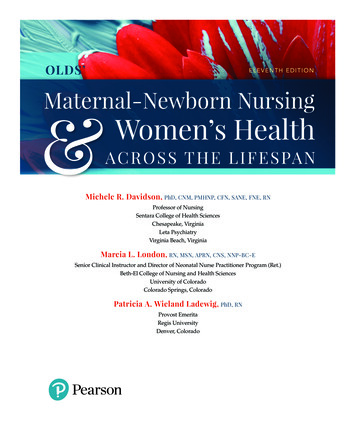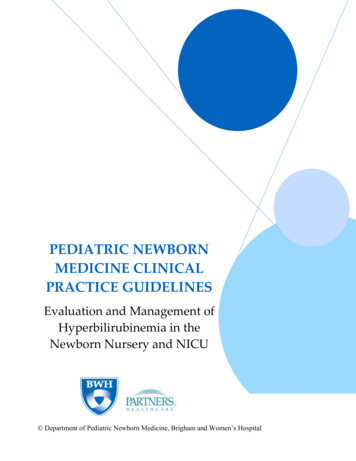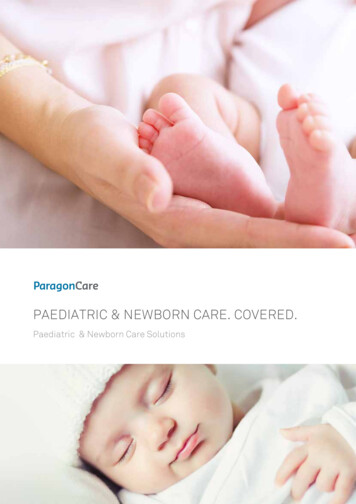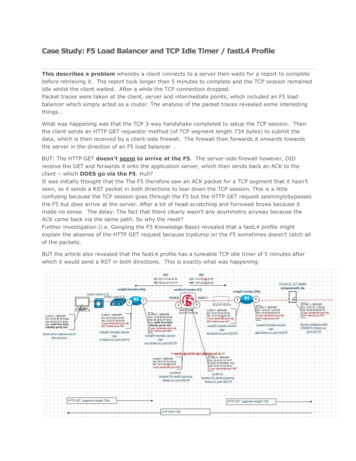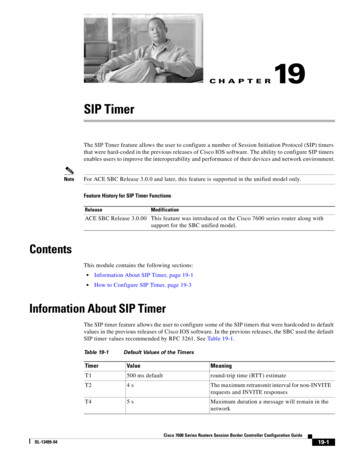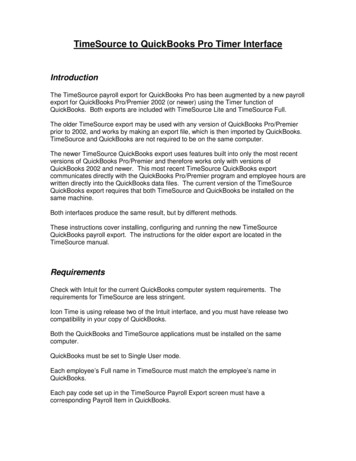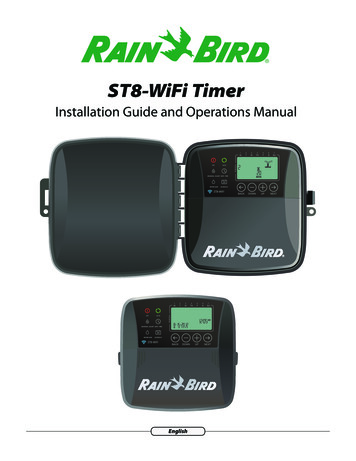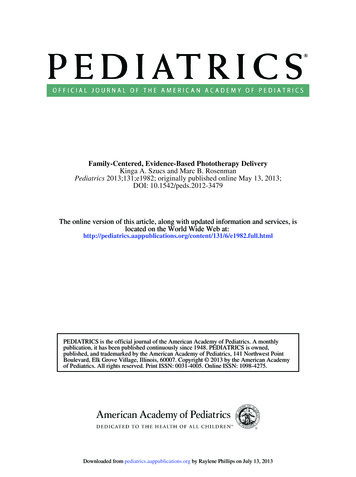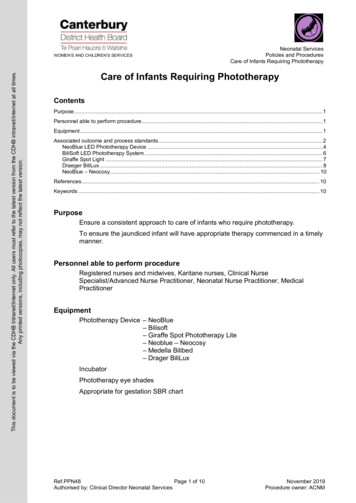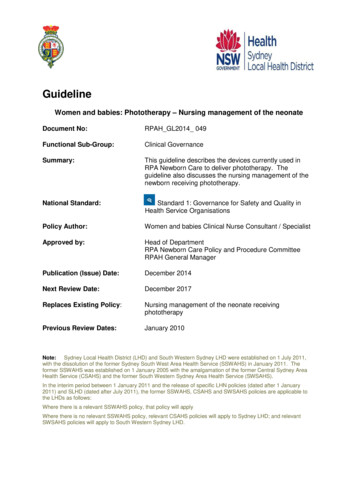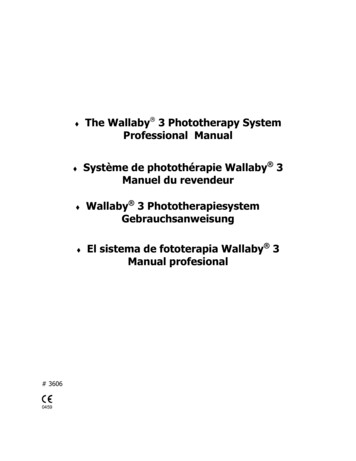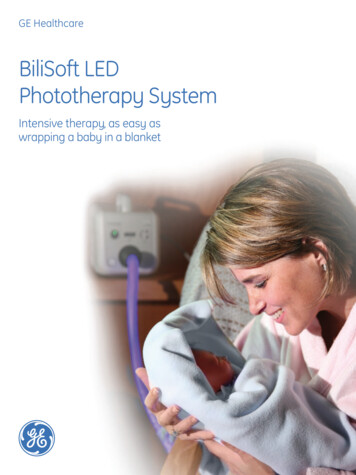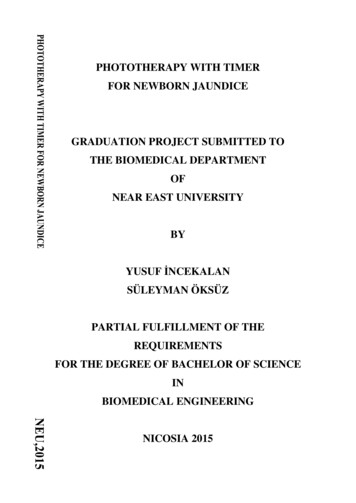
Transcription
PHOTOTHERAPY WITH TIMERFOR NEWBORN JAUNDICEGRADUATION PROJECT SUBMITTED TOTHE BIOMEDICAL DEPARTMENTOFNEAR EAST UNIVERSITYBYYUSUF İNCEKALANSÜLEYMAN ÖKSÜZPARTIAL FULFILLMENT OF THEREQUIREMENTSFOR THE DEGREE OF BACHELOR OF SCIENCEINBIOMEDICAL ENGINEERINGNICOSIA 2015
PHOTOTHERAPY WITH TIMERFOR NEWBORN JAUNDICEGRADUATION PROJECT SUBMITTED TOTHE BIOMEDICAL DEPARTMENTOFNEAR EAST UNIVERSITYBYYUSUF İNCEKALANSÜLEYMAN ÖKSÜZPARTIAL FULFILLMENT OF THEREQUIREMENTSFOR THE DEGREE OF BACHELOR OF SCIENCEINBIOMEDICAL ENGINEERINGNICOSIA 2015
We hereby declare that all information in this document has been obtained and presented inaccordance with academic rules and ethical conduct. We also declare that, as required bythese rules and conduct, we have fully cited and referenced all material and results that are notoriginal to this work.Name, Last name:YUSUF İNCEKALAN – SÜLEYMAN ÖKSÜZDate:05/01/2015
ABSTRACTBlue-light phototherapy has been an essential therapeutic tool in themanagement of neonatal jaundice for decades. Rarely, it is accompanied byacute dermatological and systemic side-effects, but fortunately these arereversible and can be adequately and promptly treated in routine neonatalpractice. In contrast, much less is known about the potential long-term sideeffects of neonatal blue-light phototherapy (NBLP). Many of the data that arecurrently available on how NBLP influences melanocytic naevus well-designedepidemiological surveys suggest that NBLP could well be a risk factor for MNformation, and highlight the need for additional in vivo and in vitro studies.NBLP is at present the mainstay of treatment for neonatal jaundice, but in thefuture greater consideration should be given to its long-term side-effects whenphototherapy is indicated. It is relevant to emphasize the importance ofappropriately restricted and adequate clinical guidelines, and strict monitoring ofthe management of hyperbilirubinaemia, in order to avoid the unnecessaryovertreatment of newborn infants.Keywords: Newborn jaundice, Phototherapy, Timing Circuit, ArduinoI
DedicationWe would like to dedicate this project to our beloved parents, grandparents andfamily for their encouragement and support. Also to our friends, I will alwaysappreciate all they have done.II
ACKNOWLEDGEMENTSFirst and foremost we would like to thank our supervisor Mr. Ali Işın who has shownplenty of encouragement, patience and support as he guided us through this project asgraduate studentsWe are also thankful for the contributions and comments of teaching staff of theDepartment of Biomedical Engineering.We are especially grateful to Assoc. Prof. Dr. Terin Adalı for being constant source ofencouragement. She helped us gain self-confidence. Here also we would like to thank ourco-advisor Mr. Fatih Nurçin and Mr. Cemre Özgöçmen who helped us one way oranother.This Project was generously supported by the Department of Biomedical Engineering ofthe Near East University.III
CONTENTSABSTRACT .IACKNOWLEDGEMENTS .IIITABLE OF CONTENTS .IVLIST OF FIGURES .IVLIST OF DIAGRAMS .XLIST OF CHARTS . XICHAPTER 1. INTRODUCTION .11.1 The Bilirubin.11.1 Figure 1:The bilirubin in the human body system.21.1 Figure2: The bilirubin producing pathway.31.2 What is the bilirubin test? .41.3 Why it is done?. .41.4 How to prepare?.41.5 How it is done?.51. 5.1 Blood sample from a heel stick . .51.5.2 Blood sample from a vein . .51.6 How It Feels? .61.6.1 Blood sample from a heel stick . . .61.6.2 Blood sample from a vein? . .61.7 Risks.61.7.1 Heel stick .6IV
1.7.2 Blood test .61.8 Results . . .61.8.1 Normal values in adults? . .61.8 Table: Normal bilirubin levels . 71.8.2 High values . .71.8.3 Low values . .71.8.4 Normal values in newborns . .71.9 What affects the test? . .81.10 Understanding the bilirubin . 81.11 Abnormalıtıes of bılırubın . .91.11.1 Gilbert's Syndrome . .91.11.2 Criglar-Najjar Syndrome, Type . .91.11.3 Criglar-Najjar Syndrome, Type II (Arias Syndrome) . . .91.11.4 Dubin-Johnson Syndrome . . 91.11.5 Rotor Syndrome .91.12 Hyperbilirubinemia . .10CHAPTER 2. NEWBORN JAUNDICE . 112.1 Newborn jaundice . . . 112.2Causes . . 112.3Symptoms . . . 122.4 Exams and Tests . . 122.5 Treatment . .132.6 Outlook (Prognosis) . . 14V
2.7 When to Contact a Medical Professional ? . 142.8 Prevention . 152.9 Alternative Names 15CHAPTER 3. PHOTOTHERAPY . . .163.1 Phototherapy . . .163.2 Indications . . .183.3 Contraindications . . . .183.4 Technical Considerations .193.4.1 Important factors of the photoherapy 193.5 Complication Prevention .213.6 Outcomes .223.7 Patient Education & Consent . .233.7.1 Patient instructions . . .233.8 Patient Preparation . . .233.8.1 Positioning . . . .233.9 Monitoring & Follow up . . .243.10 Approach considerations . . .243.11 Device Summary . .263.12 Halogen-based phototherapy lamps . 263.13 Fluorescent tubes . . 273.14 Fiberoptic phototherapy . . . 273.15 LED phototherapy . . .28VI
CHAPTER 4. ‘ARDUINO’ PROGRAMMABLE CIRCUIT BOARD . .304.1 Arduino . . . . . 304.2 Summary . . .324.3 Schematic&Reference Design . .334.4 Power . . .344.4.1 The power pins are as follows . .344.5 Memory . .354.6 Input and Output . 354.7 Communication .364.8 Programming . .364.9 Automatic (Software) Reset . . .374.10 USB Overcurrent Protection . . .384.11 Physical Characteristics . .38CHAPTER 5. WHY DO WE NEED TO USE TIMER ON PHOTOTHERAPY?.395.1 At the normal conditions . 395.2 Main risks of the phototherapy .395.2.1 It may cause skin rush and burns . .395.2.2 It damages the nerve layer at the back of the eye (retina) .405.2.3 Dehydration . 415.2.4 Skin Rash . 415.3 Improvements . . 425.4 Advantages . . .425.5 The flowchart of the our innovative project . . .43VII
5.6 Requirements . .445.6.1 An ‘Arduino Uno R3’ programmable circuit board (x1) . . .445.6.2 2x16 LCD screen shield V2 for ‘Arduino Uno R3’(x1) . 445.6.3 LM35 temperature sensor (x1) . . 455.6.4 LDR (Light Dependent Resistor) (x1) 455.6.5 Sparkfun electret microphone (x1) . 465.6.6 Relays (x2) . .465.6.7 Adapter (220VAC to 12VDC) (x1) . . 465.7 Diagram of Phototherapy With Timer . .475.8 How it used?.475.9 Innovation for Phototherapy . .485.10 Purpose . . . .48REFERENCES . . 49APPENDIX- THE COMPLETE PROGRAM LISTING . .50LIST OF FIGURESVIII
3.1: Light in the blue region of the spectrum, near 460 nm, is most stronglyabsorbed by bilirubin .183.2 : neoBLUE light-emitting diode (LED) phototherapy radiometer 223.3 :Infant under Ohmeda halogen lamp with eye protection.233.4: Infant under neoBLUE phototherapy light and lying on fiberopticphototherapy blanket . .243.5: neoBLUE light-emitting diode (LED) phototherapy system 254.1 : Arduino R3 front . .264.2: Arduino R3 back .275.1: A hazardous type of the phototherapy to overused.(Burns). 355.2: A hazardous type of the phototherapy to overused.(Dehydration) .375.3: A hazardous type of the phototherapy to overused.(Skin rash) . .385.4: Arduino . . . .405.5: 2x16 LCD screen shield V2 for ‘Arduino Uno R3’ . .405.6: LM35 temperature sensor . . . .415.7: LDR (Light Dependent Resistor) . 415.8: Sparkfun electret microphone . . .425.9: Relays . .425.10: Adapter (220VAC to 12VDC) . . .425.11: It can apply to in front of the old phototherapy. . . .44IX
LIST OF DIAGRAMS1.1: The bilirubin production sequences and relations between the organs .21.2: The bilirubin producing pathway.33.1 :Mechanism of phototherapy .164.3: Schematic & Reference Design .295.1: A hazardous type of the phototherapy to overused.(Optic nerve damaging) .365.2 :The flowchart of the our innovative project . .395.3: Diagram of Phototherapy With Timer.43X
LIST OF CHARTS1.1: Normal bilirubin levels.164.1: Technical properties of the ‘Arduino’ programmable circuit board.37XI
1.INTRODUCTION1.1 The BilirubinA bilirubin test measures the amount of bilirubin in a blood sample. Bilirubin is abrownish yellow substance found in bile. It is produced when the liver breaks down oldred blood cells. Bilirubin is then removed from the body through the stool (feces) andgives stool its normal color.Bilirubin circulates in the bloodstream in two forms: Indirect (or unconjugated) bilirubin. This form of bilirubin does not dissolve inwater (it is insoluble). Indirect bilirubin travels through the bloodstream tothe liver, where it is changed into a soluble form (direct or conjugated). Direct (or conjugated) bilirubin. Direct bilirubin dissolves in water (it is soluble)and is made by the liver from indirect bilirubin.Total bilirubin and direct bilirubin levels are measured directly in the blood, whereasindirect bilirubin levels are derived from the total and direct bilirubin measurements.When bilirubin levels are high, the skin and whites of the eyes may appear yellow(jaundice). Jaundice may be caused by liver disease (hepatitis), blood disorders (hemolyticanemia), or blockage of the tubes (bile ducts) that allow bile to pass from the liver to thesmall intestine.Mild jaundice in newborns usually does not cause problems. But too much bilirubin(hyperbilirubinemia) in a newborn baby can cause braindamage (kernicterus) and otherserious problems. So some babies who develop jaundice may need treatment to lowertheir bilirubin levels. (Healthwise,2013)1
Diagram 1.1 :The bilirubin production sequences and relations between the organsBilirubin (formerly referred to as haematoidin) is the yellow breakdown product ofnormal heme catabolism. Heme is found inhemoglobin, a principal component of redblood cells. Bilirubin is excreted in bile and urine, and elevated levels may indicate certaindiseases. It is responsible for the yellow color of bruises, the background straw-yellowcolor of urine via its reduced breakdown product, urobilin (the more obvious but variablebright yellow color of urine is due to thiochrome, a breakdown product of thiamine), thebrown color of feces (via its conversion to stercobilin), and the yellow discolorationin jaundice. (Pirone, Cary; Quirke, J. Martin E.; Priestap, Horacio A.; Lee, David W.(2009))2
Diagram 1.2: The bilirubin producing pathway3
1.2 What is the bilirubin test?1.3 Why it is done?The bilirubin test is used to: Check liver function and watch for signs of liver disease, such ashepatitis or cirrhosis,or the effects of medicines that can damage the liver. Find out if something is blocking the bile ducts. This may occur ifgallstones, tumorsof the pancreas, or other conditions are present. Diagnose conditions that cause increased destruction of red blood cells, such ashemolytic anemia or hemolytic disease of the newborn. Help make decisions about whether newborn babies with neonatal jaundice needtreatment. These babies may need treatment with special lights, called phototherapy.In rare cases, blood transfusions may be needed.1.4 How to prepare?Adults should not eat or drink for 4 hours before a bilirubin test.No special preparation is needed for children before having a bilirubin test.Tell your doctor if you: Are taking any medicines. Are allergic to any medicines. Have had bleeding problems or take blood-thinners, suchas aspirin,clopidogrel (Plavix), or warfarin (Coumadin). Are or might be pregnant.Talk to your doctor about any concerns you have regarding the need for the test, its risks,how it will be done, or what the results will mean. To help you understand the importanceof this test, fill out the medical test information form.1.5 How it is done?1.5.1 Blood sample from a heel stickFor a heel stick blood sample, several drops of blood are collected from the heel of yourbaby. The skin of the heel is first cleaned with alcohol and then punctured with a smallsterile lancet. Several drops of blood are collected in a small tube. When enough bloodhas been collected, a gauze pad or cotton ball is placed over the puncture site. Pressure ismaintained on the puncture site briefly, and then a small bandage is usually applied.Instead of the standard heel stick, some hospitals may use a device called a transcutaneousbilirubin meter to check a newborn's bilirubin level. This small handheld device measures4
bilirubin levels when it is placed gently against the skin. With this device, there may be noneed to puncture the baby's skin. This is a screening test, and a blood sample will beneeded if your baby's bilirubin level is high.1.5.2 Blood sample from a veinThe health professional taking a sample of your blood will: Wrap an elastic band around your upper arm to stop the flow of blood. This makesthe veins below the band larger so it is easier to put a needle into the vein. Clean the needle site with alcohol. Put the needle into the vein. More than one needle stick may be needed. Attach a tube to the needle to fill it with blood. Remove the band from your arm when enough blood is collected. Put a gauze pad or cotton ball over the needle site as the needle is removed. Put pressure on the site and then put on a bandage.1.6 How It Feels?1.6.1 Blood sample from a heel stickA brief pain, like a sting or a pinch, is usually felt when the lancet punctures the skin.Your baby may feel a little discomfort with the skin puncture.1.6.2 Blood sample from a veinThe blood sample is taken from a vein in your arm. An elastic band is wrapped aroundyour upper arm. It may feel tight. You may feel nothing at all from the needle, or you mayfeel a quick sting or pinch.1.7 Risks1.7.1 Heel stickThere is very little chance of a problem from a heel stick. A small bruisemay develop atthe site.1.7.2 Blood testThere is very little chance of a problem from having a blood sample taken from a vein. You may get a small bruise at the site. You can lower the chance of bruising bykeeping pressure on the site for several minutes.5
In rare cases, the vein may become swollen after the blood sample is taken. Thisproblem is called phlebitis. A warm compress can be used several times a day totreat this. Ongoing bleeding can be a problem for people with bleeding disorders. Aspirin,warfarin (Coumadin), and other blood-thinning medicines can make bleeding morelikely. If you have bleeding or clotting problems, or if you take blood-thinningmedicine, tell your doctor before your blood sample is taken.1.8 ResultsA bilirubin test measures the amount of bilirubin in a blood sample. The results areusually available in 1 to 2 hours.1.8.1 Normal values in adultsThe normal values listed here—called a reference range—are just a guide. These rangesvary from lab to lab, and your lab may have a different range for what's normal. Your labreport should contain the range your lab uses. Also, your doctor will evaluate your resultsbased on your health and other factors. This means that a value that falls outside thenormal values listed here may still be normal for you or your lab.Bilirubin levels in adultsBilirubin typeBilirubin levelTotal bilirubin0.0–1.4 mg/dL or 1.7–20.5 mcmol/LDirect bilirubin0.0–0.3 mg/dL or 1.7–5.1 mcmol/LIndirect bilirubin0.2–1.2 mg/dL or 3.4–20.5 mcmol/LTable 1.1: Normal bilirubin levels1.8.2 High valuesHigh levels of bilirubin in the blood may be caused by: Some infections, such as an infected gallbladder, or cholecystitis. Some inherited diseases, such as Gilbert's syndrome, a condition that affectshow the liver processes bilirubin. Although jaundice may occur in somepeople with Gilbert's syndrome, the condition is not harmful.6
Diseases that cause liver damage, such as hepatitis, cirrhosis,ormononucleosis. Diseases that cause blockage of the bile ducts, such as gallstonesor cancer ofthe pancreas. Rapid destruction of red blood cells in the blood, such as fromsickle celldisease or an allergic reaction to blood received during a transfusion (calleda transfusion reaction). Medicines that may increase bilirubin levels. This includes manyantibiotics,some types of birth control pills, diazepam (Valium),flurazepam,indomethacin (Indocin), and phenytoin (Dilantin).1.8.3 Low valuesLow levels of bilirubin in the blood may be caused by: Medicines that may decrease bilirubin levels. This includes vitaminC,phenobarbital, and theophylline.1.8.4 Normal values in newbornsNormal values in newborns depend on the age of the baby in hours and wh
3.4: Infant under neoBLUE phototherapy light and lying on fiberoptic . These babies may need treatment with special lights, called phototherapy. In rare cases, blood transfusions may be needed. 1.4 How to prepare? Adults sho
